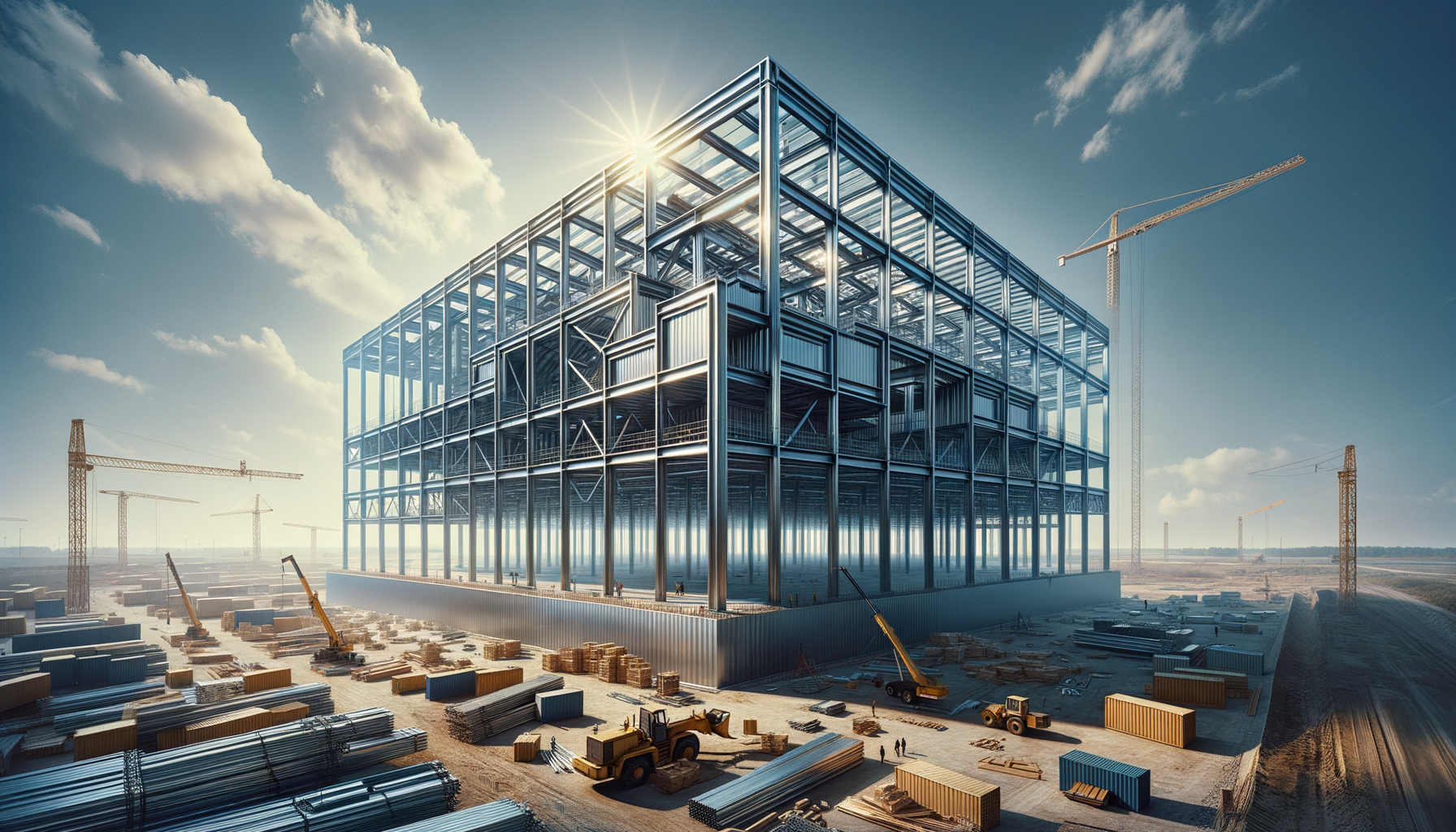Introduction to Prefabricated Metal Buildings
In the ever-evolving world of construction, prefabricated metal buildings have emerged as a game-changer. These structures are not only reshaping the way we think about building design but also offering a myriad of benefits that cater to both residential and commercial needs. Prefabricated metal buildings are manufactured in a factory setting and then assembled on-site, making them an efficient and cost-effective choice for many. They are highly regarded for their durability, flexibility, and quick installation process, which significantly reduces the time and resources typically required for traditional construction methods.
The demand for these buildings is on the rise, driven by their ability to provide long-term value and sustainability. As environmental concerns become more pressing, the construction industry is leaning towards more eco-friendly solutions, and metal buildings are at the forefront of this shift. Their adaptability makes them suitable for a wide range of applications, from homes and warehouses to offices and retail spaces. This article explores the various facets of prefabricated metal buildings, highlighting why they are becoming a preferred choice in modern construction.
Durability and Longevity
One of the standout features of prefabricated metal buildings is their exceptional durability. Constructed from high-quality steel, these structures are designed to withstand harsh weather conditions, including heavy snow, strong winds, and even earthquakes. The inherent strength of metal ensures that these buildings require minimal maintenance over their lifespan, offering a significant advantage over traditional wood or brick structures.
Moreover, metal buildings are resistant to common issues such as rot, mold, and pest infestations, which can plague conventional construction materials. This resistance not only extends the life of the building but also reduces the need for costly repairs and replacements. The longevity of prefabricated metal buildings makes them a wise investment, providing peace of mind to owners who can rely on their structure to stand the test of time.
Additionally, the recyclability of steel contributes to the sustainability of these buildings. At the end of their life cycle, metal components can be recycled and repurposed, reducing waste and promoting environmental conservation. This eco-friendly aspect aligns with the growing trend towards sustainable construction practices, making prefabricated metal buildings an attractive option for environmentally conscious consumers.
Flexibility in Design
Prefabricated metal buildings offer unparalleled flexibility in design, allowing for customization to suit specific needs and preferences. Unlike traditional construction methods, which can be limiting in terms of design options, metal buildings can be tailored to meet a wide array of aesthetic and functional requirements. This flexibility is particularly advantageous for businesses that may need to expand or modify their facilities over time.
The modular nature of prefabricated metal buildings means that they can be easily expanded or reconfigured to accommodate changing needs. This adaptability is crucial for industries that experience growth or require frequent layout adjustments, such as manufacturing and warehousing. Furthermore, the wide range of finishes and facades available for metal buildings ensures that they can blend seamlessly with existing architecture or stand out as modern, innovative structures.
For residential purposes, the design possibilities are equally exciting. Homeowners can create unique living spaces that reflect their personal style while benefiting from the efficiency and cost-effectiveness of metal construction. Whether it’s a sleek, contemporary home or a rustic, barn-style structure, prefabricated metal buildings offer the versatility needed to bring any vision to life.
Cost-Effectiveness and Efficiency
Cost-effectiveness is a major factor driving the popularity of prefabricated metal buildings. The streamlined manufacturing process allows for significant savings on materials and labor, making these structures more affordable than traditional buildings. The precision of factory production minimizes waste and ensures that components are manufactured to exact specifications, reducing the likelihood of errors and delays during assembly.
The quick installation process of prefabricated metal buildings further enhances their cost-effectiveness. With components pre-made and ready to assemble, construction time is drastically reduced, leading to lower labor costs and faster project completion. This efficiency is particularly beneficial for businesses looking to minimize downtime and start operations as soon as possible.
Additionally, the energy efficiency of metal buildings contributes to long-term savings. The reflective properties of metal roofs can help reduce cooling costs by deflecting sunlight, while proper insulation can enhance energy conservation. These factors combine to lower utility expenses, providing further financial benefits to owners of prefabricated metal buildings.
Applications and Future Trends
The applications of prefabricated metal buildings are vast and varied, spanning numerous industries and sectors. In the commercial realm, these structures are commonly used for warehouses, factories, and retail spaces due to their durability, flexibility, and cost-effectiveness. The agricultural sector also benefits from metal buildings, utilizing them for barns, storage facilities, and equipment shelters.
Residential applications are gaining traction as well, with more homeowners opting for metal buildings as primary residences or secondary structures like garages and workshops. The versatility of prefabricated metal buildings allows them to be adapted to virtually any use, making them a versatile solution for modern construction needs.
Looking to the future, the trend towards sustainable and efficient building practices is expected to drive further innovation in the prefabricated metal building industry. Advances in technology and design will likely lead to even more customizable and environmentally friendly options, solidifying the role of metal buildings in the future of construction. As the demand for quick, cost-effective, and sustainable building solutions continues to grow, prefabricated metal buildings are poised to remain at the forefront of the industry.








